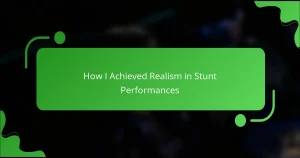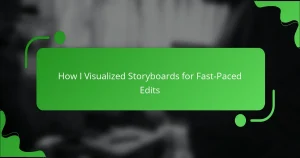Key takeaways
- Action short films deliver intense storytelling through innovative choreography, often utilizing limited budgets for impactful visuals.
- Fight choreography serves as a crucial narrative tool, conveying emotions and character development, as exemplified by the emotional depth in “John Wick.”
- Pacing, environment, and choreography are key elements that enhance the impact of action scenes, with effective transitions and settings elevating the drama.
- Filmmakers are encouraged to consider the emotional weight of movements and integrate their surroundings creatively to enhance storytelling in action sequences.
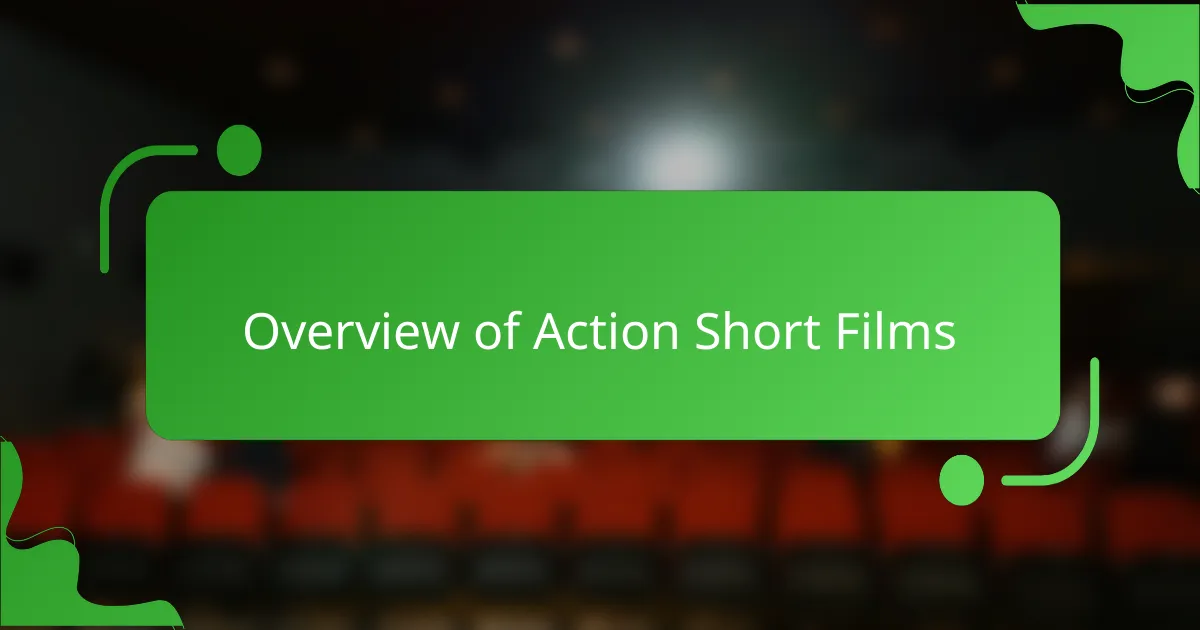
Overview of Action Short Films
When we talk about action short films, I can’t help but feel a rush of adrenaline just thinking about them. These films pack excitement into a compact format, often showcasing innovative choreography and storytelling that keeps the audience on the edge of their seats. Personally, I’m always captivated by how filmmakers utilize their budgets to create stunning visuals and compelling narratives in such a short time.
One key aspect that stands out to me is the intensity these films convey; they often rely heavily on fight choreography to create a visceral impact. This makes the action sequences not only thrilling but also a vital storytelling element. I remember watching a short film that seamlessly combined action with emotional stakes, and it really illustrated how powerful the medium can be.
| Aspect | Action Feature Films | Action Short Films |
|---|---|---|
| Length | 90-180 minutes | 1-30 minutes |
| Complexity | Multi-layered plots | Focused narratives |
| Fight Choreography | High-budget stunts | Creative low-budget techniques |
| Character Development | In-depth exploration | Quick establishment |
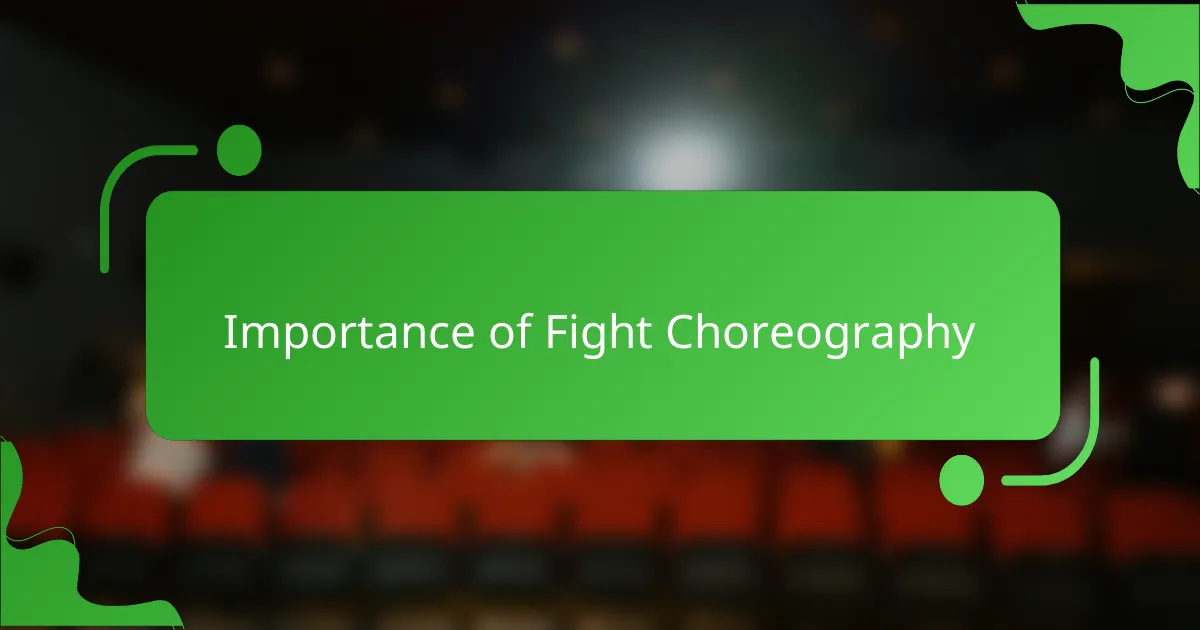
Importance of Fight Choreography
Fight choreography is crucial in action films, not just because it looks impressive but also because it tells a story. In analyzing John Wick’s choreography, I noticed how each fight sequence conveys emotions and relationships between characters. The fluidity of each movement can create tension or relief, transforming the audience’s experience. It resonates with the viewers, making them feel every punch and kick as if it’s part of the narrative.
In my experience, a well-crafted fight scene does more than engage; it connects the audience to the emotion of the moment. I remember watching John Wick for the first time, and how each strike and fall echoed the protagonist’s pain and determination. That emotional involvement is what makes fight choreography not just an element of action, but a significant storytelling tool.
| Aspect | John Wick |
|---|---|
| Choreography Style | Realistic and fluid, emphasizing movement |
| Character Development | Each fight reveals layers of emotions |
| Audience Engagement | Visceral responses through immersive action |
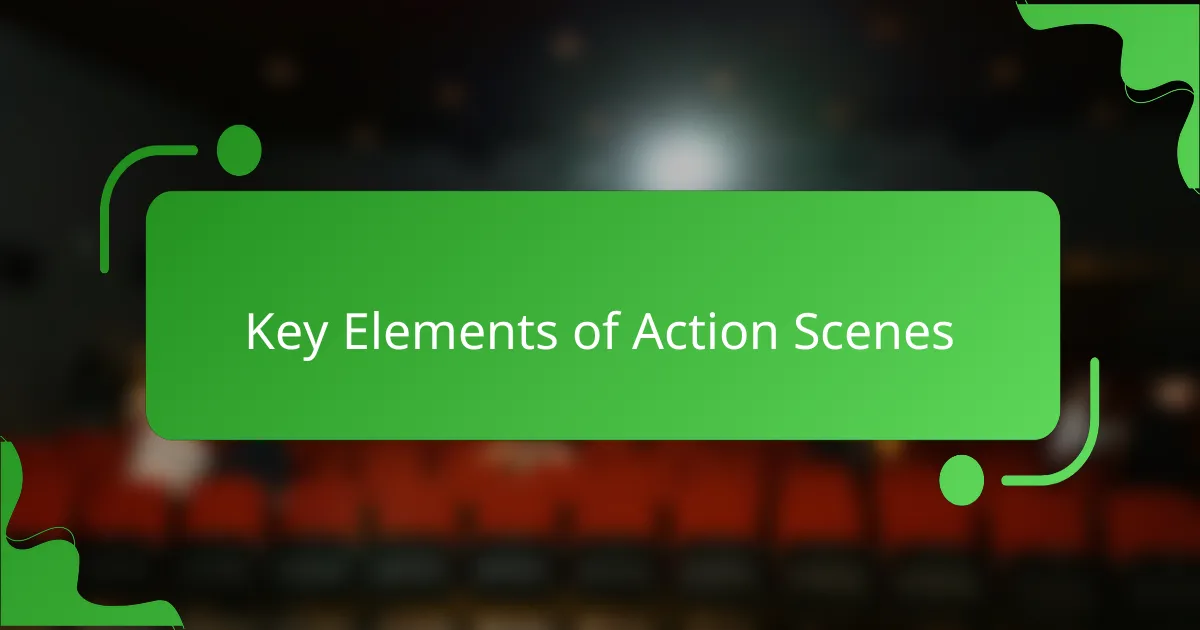
Key Elements of Action Scenes
Action scenes thrive on several key elements that I believe greatly enhance their impact. One of these elements is pacing, where the tempo of the fight can build anticipation or release tension in a heartbeat. For instance, I once experienced a short film where the sudden shifts from fast-paced brawls to slower, reflective moments made me feel the weight of each character’s choices even more. Who knew that the rhythm of action could carry so much emotional weight?
Another essential aspect is the choreography itself, which must feel both realistic and visually engaging. I’ve seen films that manage to tell a love story through the dance of combat, pulling me deeper into the narrative with every expertly timed movement. It reminds me of a film where a well-executed stunt perfectly mirrored the protagonist’s struggles, making the action a true extension of their character arc.
Lastly, the environment plays a critical role in shaping action scenes, as the setting becomes a participant in the choreography. I recall a gripping sequence where the surroundings were used creatively—the limited space intensified each clash, making every movement count. Isn’t it fascinating how the backdrop can elevate the drama and make even a small-scale confrontation feel epic?
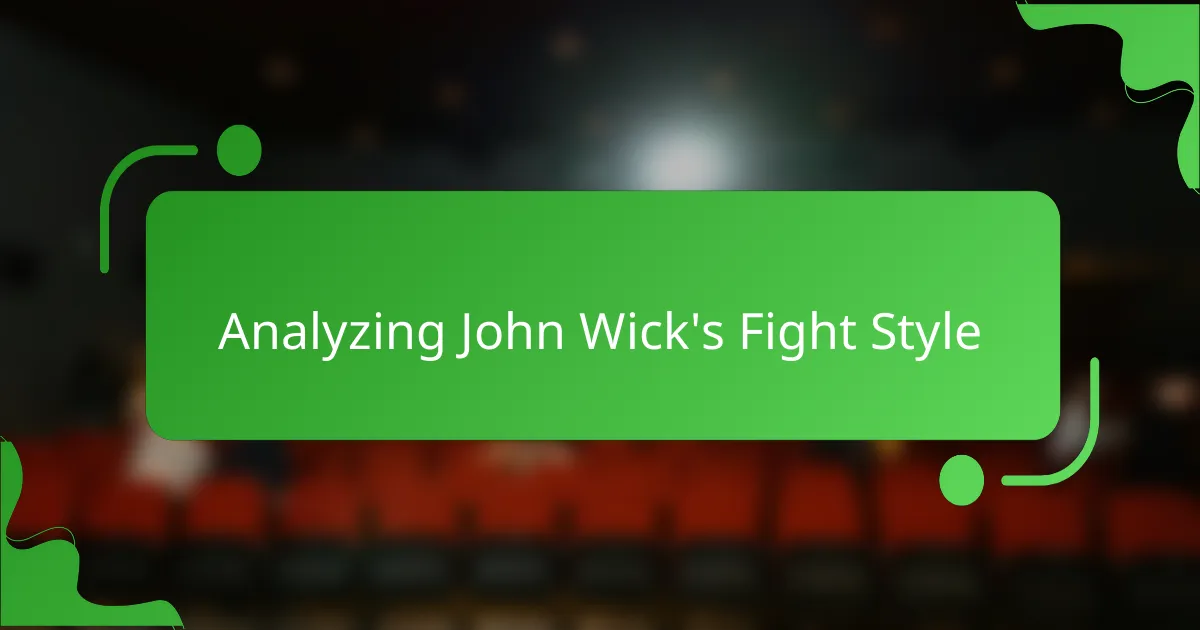
Analyzing John Wick’s Fight Style
When I first watched the John Wick series, I was struck by the fluidity and intensity of the fight choreography. Each movement tells a story, blending martial arts with weapon handling in a seamless dance of action. I remember feeling a rush of adrenaline during the scenes, as it’s not just about the fights but how they reflect John Wick’s emotional turmoil and determination.
What I find particularly compelling is how the fight style incorporates a mix of various martial arts disciplines. The precision of judo tosses, the fluidity of Brazilian Jiu-Jitsu, and even elements of Krav Maga all come together to create a unique signature style that grips you from the very first scene. It’s not just a display of skill; it’s a reflection of his character’s resilience.
Here’s a comparison table highlighting the aspects of John Wick’s fight style versus traditional fight choreography:
| Aspect | John Wick’s Fight Style |
|---|---|
| Fluidity | Highly fluid, seamless transitions between techniques |
| Emotion | Reflects character’s inner struggle and resilience |
| Discipline | Incorporates multiple martial arts for a unique approach |
| Weapon Handling | Expert use of firearms integrated into hand-to-hand combat |
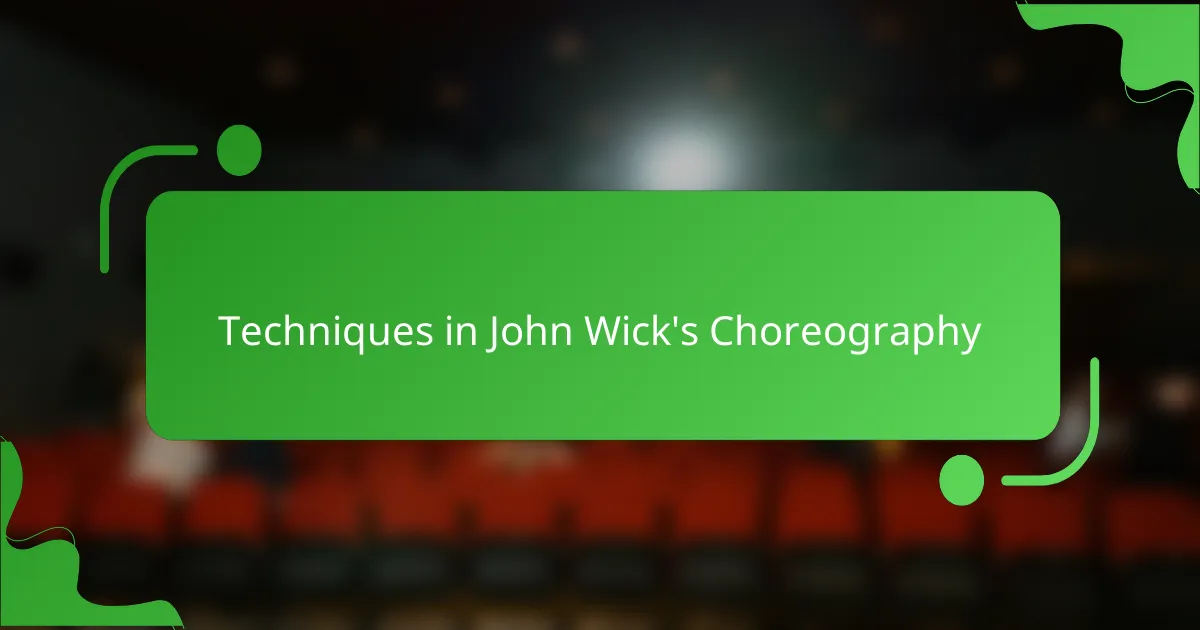
Techniques in John Wick’s Choreography
The choreography in John Wick’s fight scenes stands out due to its emphasis on realism and intensity. I recall watching the breathtaking scene in the nightclub, where each punch and kick seemed meticulously planned yet felt spontaneous, reflecting John’s sheer desperation and skill. The use of close quarters and real-world fighting techniques makes it all the more visceral, pulling me right into the action.
One technique I find fascinating is how John Wick’s choreography blends weapon handling with martial arts. It’s not just about throwing punches; it incorporates smooth transitions between hand-to-hand combat and the use of firearms. Reflecting on my experiences, I’ve often seen other films struggle with this integration, but John Wick achieves it flawlessly, creating a rhythm to the action that feels almost musical in its execution.
Transitions between styles are another hallmark of his choreography. The seamless shift from grappling to striking keeps the audience on their toes, fully engaged emotionally and physically. It immediately draws me in, leaving me wondering: how did they master such a fluid combination? The filmmakers have clearly invested time and thought into choreography that not only entertains but tells a profound story about John Wick’s unyielding spirit.

Practical Applications for Filmmakers
In working with fight choreography, filmmakers should consider the emotional weight behind each punch and kick. From my experience analyzing different fight scenes, it’s clear that movement can evoke feelings. Take, for example, a well-placed jab that not only serves the narrative but also illustrates a character’s inner conflict. When I saw how John Wick dealt with loss through battles, it truly made me think about depth in choreography.
Moreover, maintaining a strong rhythm in action sequences can amplify audience engagement. I remember watching a short film where the ebb and flow of the fight kept me guessing what would happen next. It’s fascinating how pacing can build excitement or create moments of stillness that allow for reflection. Have you ever felt time slow down during an intense scene? That’s the power of a thoughtful approach to pacing.
Finally, I believe that integrating the environment into the choreography can elevate a fight scene to a new level. I once watched a short film that cleverly used its setting, transforming ordinary objects into tools for combat. This made me realize that every location has its potential for creativity. It challenges filmmakers to think outside the box and use surroundings to enhance the narrative deeply. Isn’t it inspiring how the right environment can turn a simple fight into an unforgettable experience?

